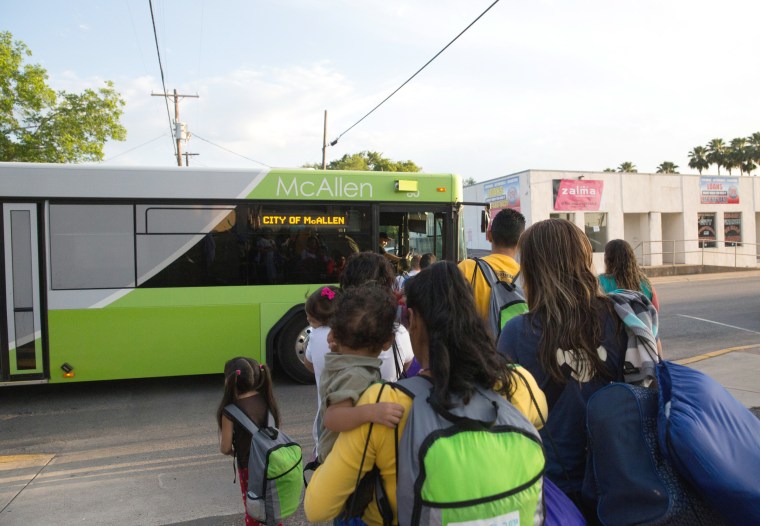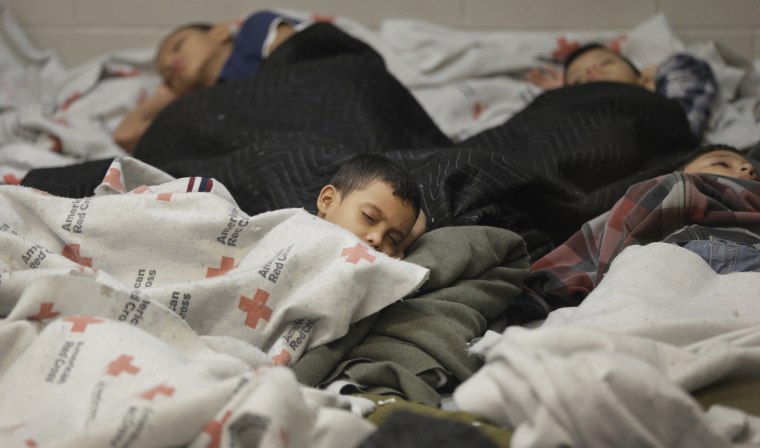llegal immigration into the United States isn't what it used to be.
The prevailing assumption that Mexican migrants, mostly men, are streaming into the United States illegally in search of jobs is long outdated, the Obama administration said this week. Instead, it's overwhelmingly families from Central America who are being intercepted together at the border.
And this distinction between the shifting demographics at the border isn't just semantics. It's not so much an illegal immigration problem, but rather, a steady stream of asylum-seekers.
Related: U.S. Expands Asylum Program for Central American Children
U.S. officials have known for years that a significant number of Central American migrants are actually turning themselves in at Border Patrol stations and begging for protection. And because they're asylum-seekers, agents can't simply turn them away or immediately deport them. The United States has a legal obligation to accept the thousands of migrants until their asylum claims are processed.

The dynamic places strains an on already overburdened immigration system in which court cases are backlogged for years. But increasingly, the steady migration stemming from the Northern Triangle of Central America — Guatemala, Honduras and El Salvador — exposes weak spots in U.S. immigration policy.
No matter how much the United States steps up security measures at the border, it has little impact on the government's legal requirement to provide at least temporary protection to migrants seeking asylum.
"Walls alone cannot prevent illegal migration," Homeland Security Secretary Jeh Johnson said in a statement Monday. "Ultimately, the solution is long-term investment in Central America to address the underlying push factors in the region."
For the second time on record, more Central Americans were seized along the U.S. border than Mexicans were in a single year, Johnson announced Monday.

A total of 408,870 migrants were apprehended in fiscal year 2016, rivaling migration levels that led to a crisis two years earlier as a surge of unaccompanied minors overwhelmed federal resources at the border.
Related: Central Americans Outnumber Mexicans Seized at U.S. Border
Maureen Meyer, a migrant rights expert at the Washington Office on Latin America, said the underlying forces driving people from Central America were largely unchanged from 2014.
Homicide rates in Guatemala and Honduras have dropped slightly in recent years, but they still rank among the most violent countries in the world. The United Nations designated El Salvador as one of the deadliest countries outside of a war zone. Meanwhile poverty and wealth inequality remained rampant throughout the region.
"It's not just economic migrants that are trying to get to the United States for a better living," Meyer said. "The numbers constitute a high degree of people fleeing for their lives."

The Obama administration initially responded to the 2014 border crisis by filling up immigrant detention centers with mothers and their children while their asylum claims were assessed.
The intention was to swiftly process and deport the detainees while sending a strong message back to Central America that the United States would not tolerate illegal immigration.
Related: This Is What happens When Mexico Cracks Down on Immigration
Instead, what authorities later found was that the vast majority of the detained families passed the first of many tests on their asylum applications — more than 86 percent of immigrants held in family detention showed a "credible fear" of returning to their home countries, according to U.S. Citizenship and Immigration Services. It meant they could remain in the United States to follow their applications to the end.
Michelle Brané, director of migrant rights at the Women's Refugee Commission, says the administration's push to discourage people from coming to the United States has, instead, backfired. Federal courts soon chipped away at the scope of the administration's immigrant family detention practices.
And according to Brané, the new border statistics only confirm that Central Americans will continue to find a way to the United States, no matter what stands before then.
"If you're in a burning house, you're going to find a way out no matter how many obstacles are put in your way," Brané said.